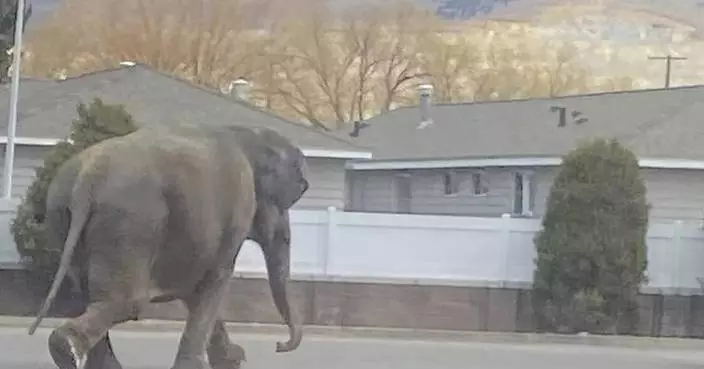Indian police on Monday took the unusual step of using elephants in an attempt to evict hundreds of people living illegally in a protected forest area in the country's remote northeast.

An elephant is used to demolish a house during an eviction drive inside Amchang Wildlife Sanctuary on the outskirts of Gauhati, Assam, India, Monday, Nov. 27, 2017. (AP Photo/Anupam Nath)
Police used bulldozers and the elephants in a show of force, and the forest dwellers responded by hurling rocks. Police commissioner Hiren Nath said five protesters were injured in a scuffle after police used tear gas in the Amchang forest area in Assam state.
Click to Gallery
Indian police on Monday took the unusual step of using elephants in an attempt to evict hundreds of people living illegally in a protected forest area in the country's remote northeast.
Police used bulldozers and the elephants in a show of force, and the forest dwellers responded by hurling rocks. Police commissioner Hiren Nath said five protesters were injured in a scuffle after police used tear gas in the Amchang forest area in Assam state.
State Forest Minister Pramilla Brahma said the area is an elephant habitat and the unauthorized settlements were forcing the pachyderms to leave in search of food. There have been many incidents in which wild elephants have entered villages, destroying crops and even killing people.
Nath said the police action followed a court order to clear the forest of illegal encroachment by Thursday.
An elephant is used to demolish a house during an eviction drive inside Amchang Wildlife Sanctuary on the outskirts of Gauhati, Assam, India, Monday, Nov. 27, 2017. (AP Photo/Anupam Nath)
An elephant is used to demolish a house during an eviction drive inside Amchang Wildlife Sanctuary on the outskirts of Gauhati, Assam, India, Monday, Nov. 27, 2017. (AP Photo/Anupam Nath)
An elephant is used to demolish a house during an eviction drive inside Amchang Wildlife Sanctuary on the outskirts of Gauhati, Assam, India, Monday, Nov. 27, 2017. (AP Photo/Anupam Nath)
An elephant is used to demolish a house during an eviction drive inside Amchang Wildlife Sanctuary on the outskirts of Gauhati, Assam, India, Monday, Nov. 27, 2017. (AP Photo/Anupam Nath)
Elephants are brought to demolish buildings and other structures during an eviction drive inside Amchang Wildlife Sanctuary on the outskirts of Gauhati, Assam, India, Monday, Nov. 27, 2017. (AP Photo/Anupam Nath)
An elephant is used to demolish a house during an eviction drive inside Amchang Wildlife Sanctuary on the outskirts of Gauhati, Assam, India, Monday, Nov. 27, 2017. (AP Photo/Anupam Nath)
Authorities plan to demolish about 1,000 bamboo and tin huts.

An elephant is brought to demolish buildings and other structures during an eviction drive inside Amchang Wildlife Sanctuary on the outskirts of Gauhati, Assam, India, Monday, Nov. 27, 2017. (AP Photo/Anupam Nath)
State Forest Minister Pramilla Brahma said the area is an elephant habitat and the unauthorized settlements were forcing the pachyderms to leave in search of food. There have been many incidents in which wild elephants have entered villages, destroying crops and even killing people.

An elephant is used to demolish a house during an eviction drive inside Amchang Wildlife Sanctuary on the outskirts of Gauhati, Assam, India, Monday, Nov. 27, 2017.(AP Photo/Anupam Nath)
Nath said the police action followed a court order to clear the forest of illegal encroachment by Thursday.
The eviction drive is being carried out by wildlife wardens, with police providing protection against possible attacks by angry residents.

Elephants are used to demolish houses during an eviction drive inside Amchang Wildlife Sanctuary on the outskirts of Gauhati, Assam, India, Monday, Nov. 27, 2017. (AP Photo/Anupam Nath)
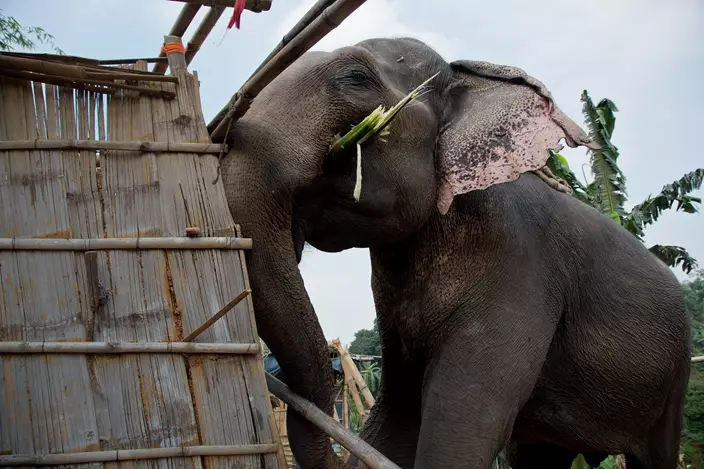
An elephant is used to demolish a house during an eviction drive inside Amchang Wildlife Sanctuary on the outskirts of Gauhati, Assam, India, Monday, Nov. 27, 2017. (AP Photo/Anupam Nath)
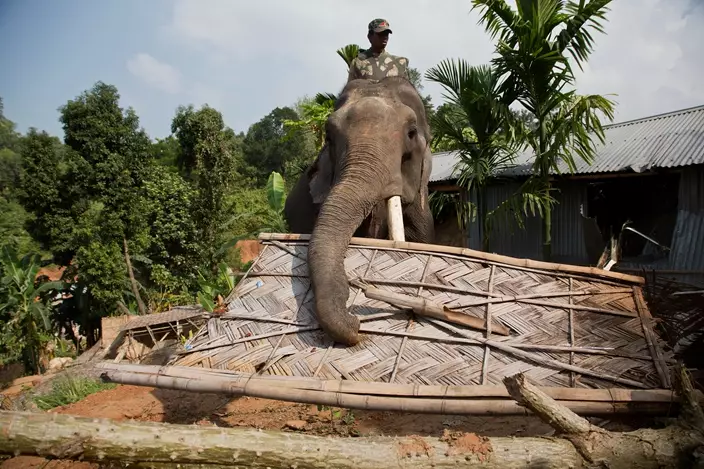
An elephant is used to demolish a house during an eviction drive inside Amchang Wildlife Sanctuary on the outskirts of Gauhati, Assam, India, Monday, Nov. 27, 2017. (AP Photo/Anupam Nath)
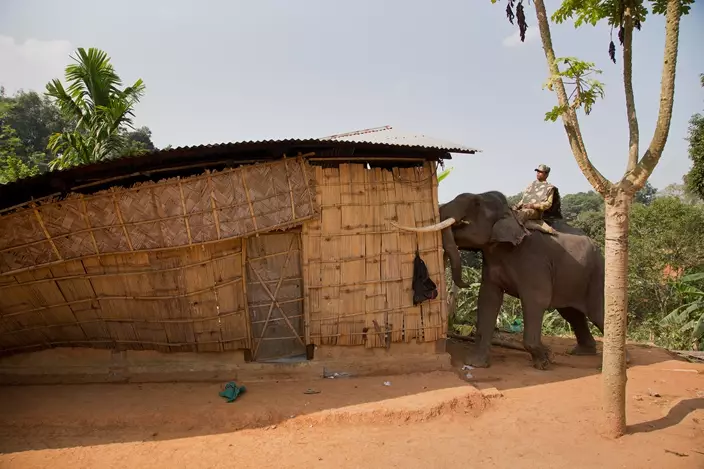
An elephant is used to demolish a house during an eviction drive inside Amchang Wildlife Sanctuary on the outskirts of Gauhati, Assam, India, Monday, Nov. 27, 2017. (AP Photo/Anupam Nath)

An elephant is used to demolish a house during an eviction drive inside Amchang Wildlife Sanctuary on the outskirts of Gauhati, Assam, India, Monday, Nov. 27, 2017. (AP Photo/Anupam Nath)
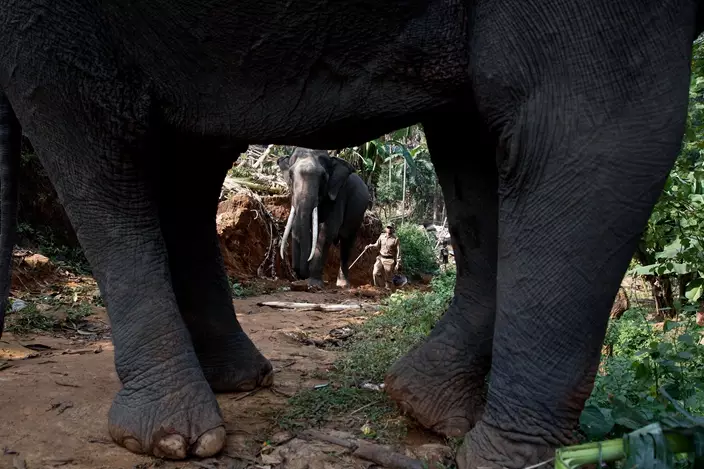
Elephants are brought to demolish buildings and other structures during an eviction drive inside Amchang Wildlife Sanctuary on the outskirts of Gauhati, Assam, India, Monday, Nov. 27, 2017. (AP Photo/Anupam Nath)
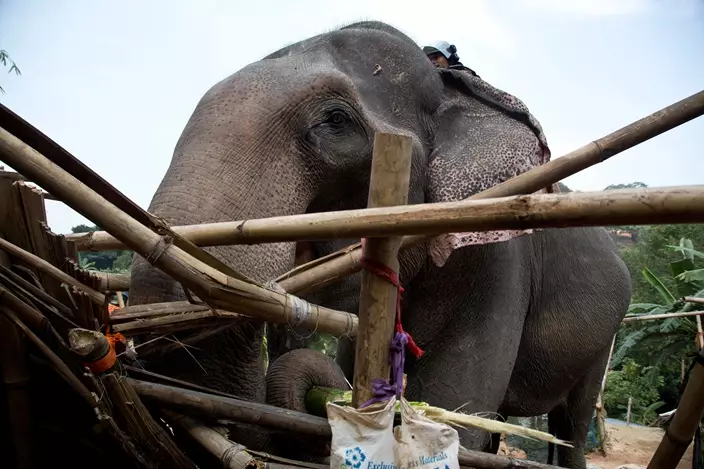
An elephant is used to demolish a house during an eviction drive inside Amchang Wildlife Sanctuary on the outskirts of Gauhati, Assam, India, Monday, Nov. 27, 2017. (AP Photo/Anupam Nath)
WASHINGTON (AP) — A ancient giant snake in India might have been longer than a school bus and weighed a ton, researchers reported Thursday.
Fossils found near a coal mine revealed a snake that stretched an estimated 36 feet (11 meters) to 50 feet (15 meters). It's comparable to the largest known snake at about 42 feet (13 meters) that once lived in what is now Colombia.
The largest living snake today is Asia's reticulated python at 33 feet (10 meters).
The newly discovered behemoth lived 47 million years ago in western India’s swampy evergreen forests. It could have weighed up to 2,200 pounds (1,000 kilograms), researchers said in the journal Scientific Reports.
They gave it the name Vasuki indicus after “the mythical snake king Vasuki, who wraps around the neck of the Hindu deity Shiva,” said Debajit Datta, a study co-author at the Indian Institute of Technology Roorkee.
This monster snake wasn’t especially swift to strike.
“Considering its large size, Vasuki was a slow-moving ambush predator that would subdue its prey through constriction,” Datta said in an email.
Fragments of the snake's backbone were discovered in 2005 by co-author Sunil Bajpai, based at the same institute, near Kutch, Gujarat, in western India. The researchers compared more than 20 fossil vertebrae to skeletons of living snakes to estimate size.
While it's not clear exactly what Vasuki ate, other fossils found nearby reveal that the snake lived in swampy areas alongside catfish, turtles, crocodiles and primitive whales, which may have been its prey, Datta said.
The other extinct giant snake, Titanoboa, was discovered in Colombia and is estimated to have lived around 60 million years ago.
What these two monster snakes have in common is that they lived during periods of exceptionally warm global climates, said Jason Head, a Cambridge University paleontologist who was not involved in the study.
“These snakes are giant cold-blooded animals," he said. "A snake requires higher temperatures” to grow into large sizes.
So does that mean that global warming will bring back monster-sized snakes?
In theory, it's possible. But the climate is now warming too quickly for snakes to evolve again to be giants, he said.
The Associated Press Health and Science Department receives support from the Howard Hughes Medical Institute’s Science and Educational Media Group and the Robert Wood Johnson Foundation. The AP is solely responsible for all content.
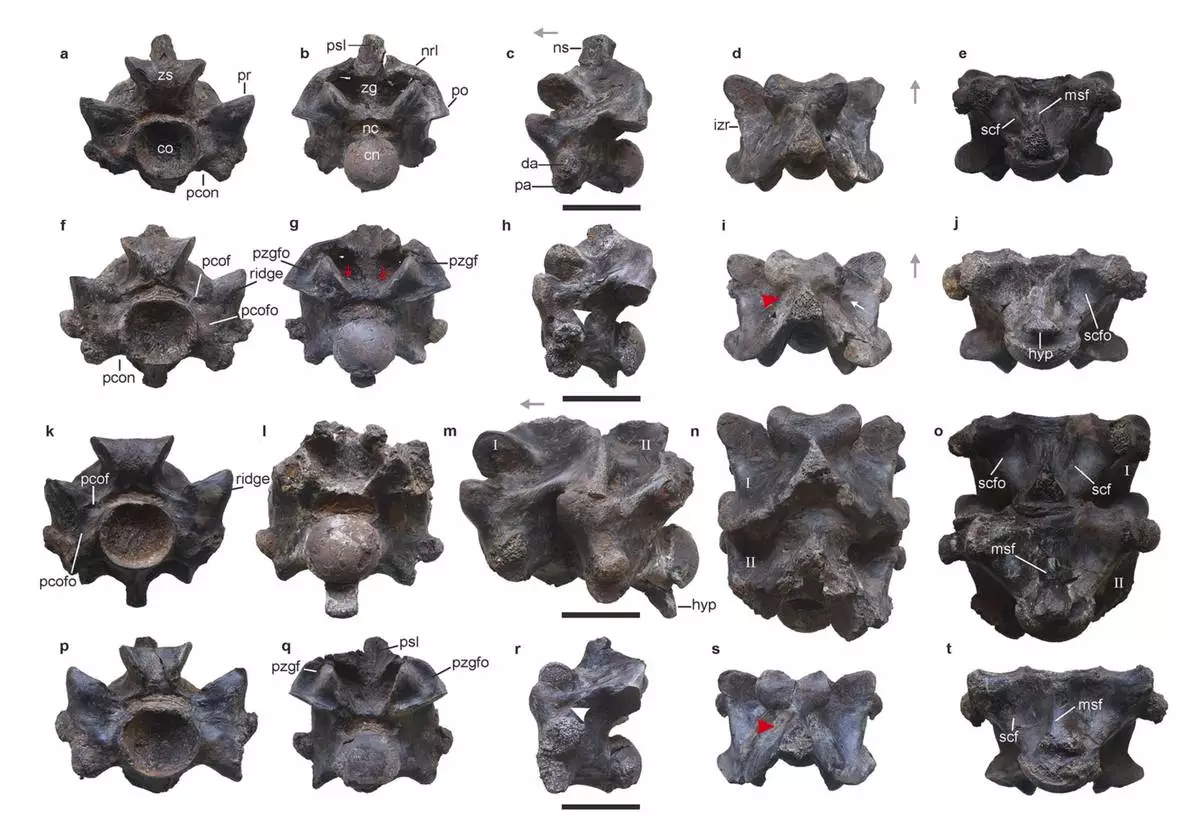
This image provided by researchers in April 2024 shows views of some of the vertebrae of Vasuki indicus, a newly discovered extinct snake from about 47 million years ago, estimated to reach nearly 50 feet (15 meters) long. The scale bar at the center of each row showing rotated views of an individual vertebra indicates 5 centimeters (almost 2 inches). (Sunil Bajpai, Debajit Datta, Poonam Verma via AP)













